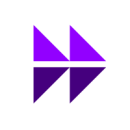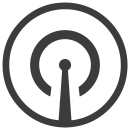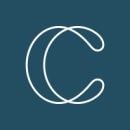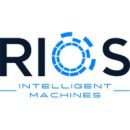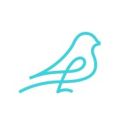Engineers, despite being the technical core of every tech company, aren’t a monolithic entity. They span various roles across entirely different teams — hardware, firmware, software and more. In competing for new hires, companies recruiting engineering talent are appealing with aspects of company culture as diverse as their own skill sets and roles.
First, there’s the tech stack. With enough options to fill the pages of a “Engineering for Dummies” book, software tool stacks today fulfill a tremendous number of combinations that appeal to a host of different engineers. But buckling on a specific toolbelt doesn’t have to be intimidating — it informs the company’s digital strategy and expertise, and also prioritizes approachability and utility for its engineers. Potential hires can glean a lot from a company’s tech stack, including the objectives targeted by its different dev teams.
“I focus on our cloud development stack,” said Kate Heddleston, software engineering manager at Samsara. “Our engineers quickly become experts in time-series data.”
There are also tangential factors around the tech itself. The collaborative accessibility, feeling of community and success of the engineering team’s integration into the company form a whole greater than the sum of its parts. Engineering teams competing for hires must showcase members that are not walled off by their technical prowess, but rather incorporated in collaborative relationships with one another and other aspects of the company.
“As an engineer, you get to see your work come to life and be a part of a bigger human story,” said Ankoor Shah of his time as an ML conversation engineer at Moveworks. He led the localization efforts for a multilingual rollout of his company’s app, which had a scope that encompassed teams outside of engineering.
In the end, a team only operates as well as the well-being of its members. For such a critical component of a tech company, it helps to have engineers feel like they belong to somewhere unique and tailored to their needs. To see how that’s done, Built in SF talked to engineers from seven hiring companies about how their companies have carved out a place of belonging for them.

What they do: Samsara is an Internet of Things company with a focus on software, cloud services and sensor development.
Favorite tech tools: “Samsara is in a unique position where we cover everything from hardware to firmware to platform. I focus on our cloud development stack, including React, TS, go, graphQL, RPC, MySQL and Kinesis Stats. We stream over 1 billion data points per day via cell to our back-end cloud. We surface this data to help customers manage complex logistics workflows in industries like fleet management. As a result, our engineers quickly become experts in time-series data. We collaborate closely with hardware and firmware engineering teams, which widens our expertise to create great customer experiences from the device to the cloud.”
Engineering teamwork: “We’re in the process of developing new hardware devices. It’s incredibly fun since the full-stack team gets to work with the hardware and firmware teams on leveling-up what these devices do for our customers. Hardware typically starts first, firmware builds on top and the backend feeds these new features to our customers. Seeing a device light up on the dashboard is incredibly satisfying.”
Challenges of New Device Development
- Hardware: Supply chain issues require creativity and attention to detail when designing new hardware to make sure the product is scalable.
- Firmware: Minimizing power consumption is one of the most challenging parts of writing firmware for new devices. It significantly impacts the longevity and sustainability of our solutions for customers.
- Full-stack: Making sure that we correctly collect all data from our devices making that data visible and usable to customers. If we have new abilities to gather data, we are responsible for serving that to customers in a usable and engaging way.
On a collaborative and inclusive culture: “I’ve appreciated the psychological safety and sense of collaboration that I feel at Samsara. A kind and respectful engineering culture manifests in many ways here. Most noteworthy is in our regular problem-solving meetings. We bring engineers, PMs, leaders and designers into the same room to tackle technical problems. During those meetings, people make space for others to speak, actively listen and acknowledge ideas from all sides to create the best solution. There’s little ego in the day-to-day decision-making, making Samsara a peaceful and sustainable workplace.”

What They Do: Moveworks is an enterprise AI platform for workplace request management.
Favorite tech tools: “Our success starts with our tools. At Moveworks, we use good tools to produce good results. We use a single repository for all of our code, composed of Python, Javascript and Golang. We use Bazel to manage that repository. For our deployment stack, we also use AWS deploy and Kubernetes, and we use Terraform to manage our AWS deployed instances.
“Bazel is probably my favorite tool. It does a really good job at managing dependencies across teams, and it gives us a common framework for every language and team to manage testing, building and deploying services. What I like about it most is that it allows every engineer to use a common language, which significantly increases our efficiency as a result.”
More languages for more people: “One of my favorite projects was our multilingual support rollout. It uses machine learning and conversational AI to answer employee support questions no matter what language employees speak. We were tasked with localizing everything in our application, which touched every user-visible text string — all while ensuring the bot voice was consistent for every language and every user. It was a huge team effort that involved end-to-end coordination between our conversation engines, platforms and ML teams to drive. We were able to successfully iterate without causing any disruptions for developers or engineers working on other features. And now, the pipeline is fully automated, so we have deeper visibility into what strings are translated and where they are in the process.
“It was a fun project that I was able to lead from start to finish on the translation side. I coordinated tasks between a few key engineers, developed a roadmap and was able to work through different challenges at each step of development. I also liked that it involved coordination outside of engineering as well.”
The fulfillment of marketing and feedback: “A lot of engineering teams spend their time working on back-end systems where they don’t get to see the real impact of their work. But at Moveworks, our product is about helping real people with everything they need at work — all through simple conversations with our AI.
“We regularly hear from customers and users about how much our product impacts their day-to-day operation. And we work with our marketing team to capture these results in places like the Wall Street Journal and on billboards along the 101 freeway.”

What They Do: Sensor Tower is a data analytics market intelligence company with a focus on the mobile space.
Favorite tech tools: “Our tech stack is Ruby, Ruby on Rails, MongoDB, Knockout.js, React and Cypress. On top of that, the team has spent a good deal of time improving the development and build processes. Small things like having each PR spin up its own staging server are well appreciated. We also recently built a dockerized nginx reverse proxy that allows API requests to be routed to an external server. This way, it helps with onboarding and working on new features. On top of that, all of this is well-documented. I’m happy we are an engineering team that puts so much emphasis on making each developer’s life easier.”
Flexibility is key: “I am thankful to have flexibility in what I work on. One project that really excites me is the migration from Knockout.js to React. We had been considering it for a while and I was happy to learn that our weeks of research paid off and we would start the migration. Right now we are in the middle of an overhaul of one of our most popular pages. This is a cross-team effort including product, design, engineering and QA.
“One cool thing we started is ‘planning poker.’ Estimating tickets is hard, so planning poker gamifies that process and makes it more fun. The way it works is we come up with the implementation details and discuss as a group what’s involved, then each engineer votes with their estimate of how long they think the ticket will take. After everyone votes, we reveal the results and discuss the differences before finally coming to a consensus on a final estimate. The results can sometimes be surprising and it’s helped hone my skills in approaching projects.”
Turning passion into connection: “The collaboration of the engineering team is really great. I started at Sensor Tower when it had already gone remote because of the pandemic. Everyone makes themselves available for code review or to talk through a ticket. Those pairing sessions have been invaluable and I walk away having learned a ton, especially when it comes to Ruby and Ruby on Rails. It’s exciting to work with people who have such a deep interest in programming and who take the time to pass on their knowledge.”

What They Do: Covariant is a robotics AI company.
Favorite tech tools: “I work on the AI Infrastructure team at Covariant, and we work a lot with data. A lot of our data pipelines use Kubernetes deployments with S3 instances, and we use a Django database and Django Rest Framework (DRF) to manage logged telemetry files. A lot of our other tools are fairly standard: Docker, Kubernetes and Terraform, Bazel, GRPC, React, Python and more.
“It’s hard to pick a favorite tool but I’ve enjoyed working with Django a lot — I think it’s incredibly flexible and it’s really easy to get the application up and running.”
Risk and rewards of a project rollout: “Recently, I’ve been working on allowing others to assign tags to our data in our Django web application, which can be used to tag good data, bad data, training data or anything else. Learning Django and implementing the backend side was fun, but really the hardest part of any project is helping others to use it, or rolling the project out to be used in production, because anything can happen in production.
“It’s also the most rewarding part in my eyes because of how satisfying it is to see a project finally getting off the ground; it makes me feel like I can directly contribute to, and make a measurable impact on, our deployments and product.”
A startup is its people: “My favorite part of Covariant is being surrounded by really smart and passionate people. It’s also made collaboration and working together very easy; I’ve always found that people have always been willing to hop on a call and explain, or pair program on an issue.
“It can be a little crazy at a startup for sure, and I can get pulled into problems that don’t involve my direct team, but it also gives me opportunities to talk to others and learn more about different parts of the organization and product. I’ve gotten a lot of hands-on experience — not all of it willingly — but ultimately I think it’s been fairly rewarding.
“In the end, after all this craziness, at least there are a lot of shenanigans and stories to tell — deployments in a sweltering un-air-conditioned warehouse from the early days, celebrating shipping a station after a huge sprint — and I think tackling these problems together really pulls people together. Something about diamonds being formed under pressure.”

What They Do: Point is a fintech company that offers home equity contracts.
Favorite tech tools: “We use Ruby, Rails and Postgres in addition to JS+ React. Development environment comes down to each individual Pointer’s personal preferences, but most of us are using RubyMine or VS Code.
“On the Ruby and Rails side of things, we’ve been trying out Sorbet for gradually adding static typing to one of our core apps. While there are some rough edges — everything is pre-1.0 — the type checking is super fast, and being able to make sure every case is handled for a union type or enum is really neat.
“Finally, we have a QA automation project which uses Cypress to drive realistic, browser-based integration tests beyond what we capture in RSpec unit tests.”
For those up for a challenge: “The most interesting project I’m working on is the ‘configuration self-serve’ project. The goal is to give our operations teams the ability to directly define and update important entities and processes within our applications, thereby empowering them to customize the tools to their needs — all without relying on the engineering team to write new code.
“While the broad scope presents a challenge and requires reimagining many different components in a more holistic and reusable way, it is exciting work because each iteration of the project will have a tremendous impact on the effectiveness of both our operations teams and our product and dev team.”
The company’s DNA: “Hmmm… It’s either the hilarious Codenames sessions or Jordan’s ‘joke of the day’ to wrap up morning stand-ups.
“Just kidding! For me personally, what sets Point apart is the amazing people I have the pleasure of working with. Great people are part of the company DNA and this is largely the result of our stellar leadership. For product and dev specifically, this translates into a highly collaborative team combining their talents and efforts to create products that have real impact on the lives of our customers. It is rewarding to be a member of such an engineering org — especially one that values developers as creative problem solvers and gives them the necessary autonomy to do their work and do it well. Finally, we have great PM-dev interactions and I think we just generally like working with each other quite a bit.”
What They Do: RIOS Intelligent Machines is a robotics AI company that specializes in factory automation.
Favorite tech tools: “From the perspective of a traditional hardware company, RIOS is far from it. We use Fusion360 for computer-aided design (CAD) as opposed to other popular CAD programs because we are developing internal tools to streamline what used to be mundane tasks in traditional hardware workflows. Things like automated design generation, BOM generation, automated inhouse manufacturing, purchasing and more are all tools being developed and used. These tools allow us to become more efficient and spend more time on challenging issues. Additionally, we are also using NVIDIA’s Isaac Sim to bridge the gap not only between the real world and simulation, but also between mechanical simulation and robotics simulation. Some of my favorite tech tools that my team is using are Fusion360, Python and Isaac Sim.”
Having a common, technical objective: “One of the most challenging projects I am working on now is how to gradually decrease the time it takes to develop a robotic workcell from start to finish. From a hardware standpoint, getting parts in your hands after ordering can take anywhere from weeks to months. We are working on standardization across our products, automatic design generation tools, optimizing design and manufacturing workflows and automating documentations processes. I enjoy seeing different teams working together towards this goal.”
Sometimes it takes the whole village: “We all come from different industries and have different strengths. There are team members who are more comfortable with system level layout, selecting automation components, frame design, electrical design, custom robot end of arm tooling and more. This allows us to play to our strengths, but at the same time learn from each member. Also, everyone in the group is great at taking initiatives in introducing or refining our current processes. If anyone has a new idea they want to share, there isn’t any difficulty to get anyone’s feedback.”

What They Do: Sparrow is an employee leave management platform.
Favorite tech tools: “Our core product is a web application that is the hub for managing the entire employee leave process. This includes: a React JS frontend handling UI and presentation, an API layer in Django-Python where a lot of our business logic lives and a PostgreSQL database that houses the data. We deploy on the cloud via Heroku. Through the use of containers and Heroku, we’ve been able to really streamline development. New engineers can architect an environment with just a few commands; we can easily bring up replicable self-contained prod-like environments for code reviews and staging; and frequent deployment is incredibly easy.”
Work can be fun: “One of the more exciting ongoing projects is how we’re revamping the leave planning experience in our application. This is a particularly fun project because it requires solving several intersecting and difficult problems across multiple domains: How do we build product flows to simply capture all the complexity in this process? How do we design the right data structures and algorithms to efficiently and handle all situations in a scalable way? How do we make the UI beautiful and easy to use?”
Team time is important: “Our engineering team collaborates very closely with the rest of the company. Not only do we continuously engage with many other functions, we proactively create opportunities to really get to know people from all parts of the company. One of our favorite rituals is ‘Team Time,’ where some of our engineers get to have passionate debates with a random group of Sparrow employees on critical topics such as when it is too late to wish people a happy new year or whether a straw has one or two holes.”






